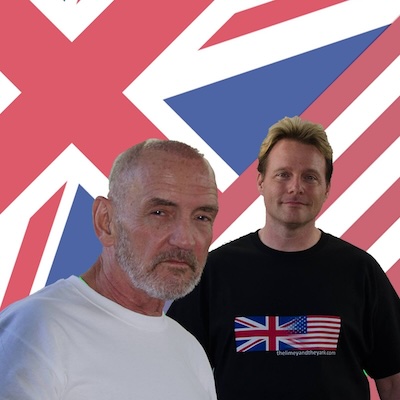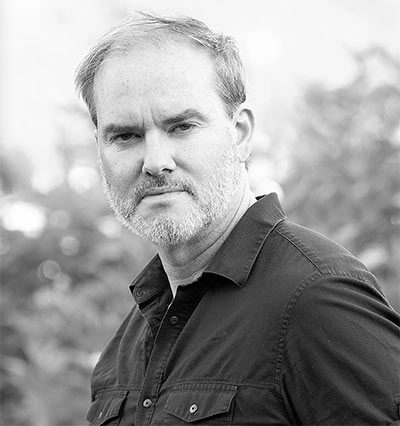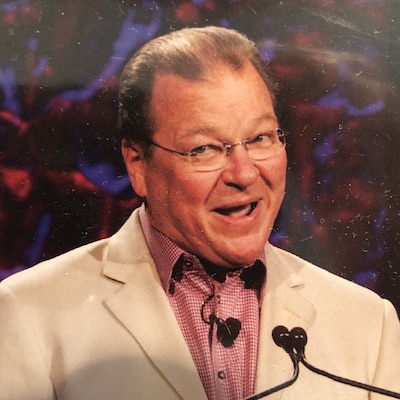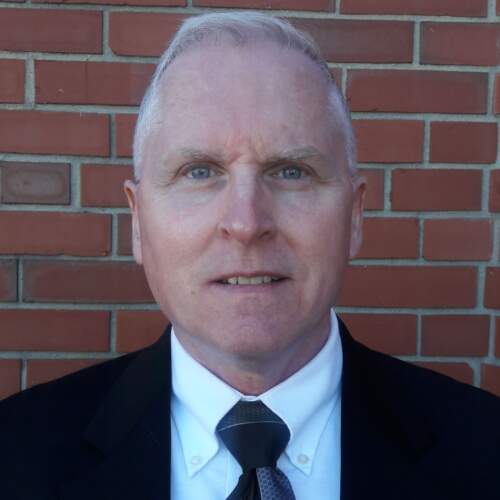Mastering the 6 Key Components of Business Success
In this episode of “Meet the Expert,” Elliot Kallen, CEO of Prosperity Financial Group, interviews Mark O’Donnell, CEO of EOS Worldwide, a company that specializes in managing human energy through the Entrepreneurial Operating System (EOS). They delve into the importance of vision, traction, and healthy teams, and discuss how EOS helps businesses align their leadership and staff towards common goals. The conversation provides invaluable insights for C-suite executives and business owners looking to scale their companies effectively.
Watch the Episode Here
Introduction to Mark O’Donnell and EOS Worldwide
Elliot Kallen: Well, good morning and good afternoon, everyone. I’m Elliot Kallen, CEO of Prosperity Financial Group. Today, we’re doing something a little bit different and very exciting.
We are interviewing a professional CEO, Mark O’Donnell from Pennsylvania, outside of Philadelphia. His company is called EOS Worldwide. It sounds like a data company, but it’s not; it’s a people-energy company. What we’re doing today is something different. Mark deals with companies to help develop vision statements and energy statements and drive people, getting them all on the same page. If you’re looking to grow and you’re in the C-suite of a dynamic company, his company is the kind you want to bring in to make sure that all the horses are pulling in the same direction.
Understanding the Entrepreneurial Operating System (EOS Worldwide)
Elliot Kallen: So welcome, everybody. If you need to reach us, it’s at ProsperityFinancialGroup.com or at 925-314-8500. And let’s get started. So welcome, Mark. Glad to have you here. And to give you a quick background, he has been in the Hall of Fame twice with a magazine that’s pretty spectacular. But more important than what he’s done is what his company is doing right now, which is really an Entrepreneurial Operating System. That’s what EOS Worldwide stands for. In our world, for those running companies or part of companies, HR companies, and for those listening, Mark is managing human energy. That’s what they do: leadership, visions, goal setting for companies from 10 to 250 employees. If you’re part of that team, C-suite, HR team, or know someone who is, you’re going to love what you’re about to hear because it’s pretty spectacular. So welcome, Mark.
Mark O’Donnell: Thanks for having me. Good to be here.
Elliot Kallen: Absolutely. Glad to have you. So why don’t we start with a little bit about the company? It sounds like an operating system, like a software company, but it’s a human energy system. Tell us a little bit about what you do and the impact you have, and then I’ll ask you some questions about it.
The Importance of Vision, Traction, and Healthy Teams
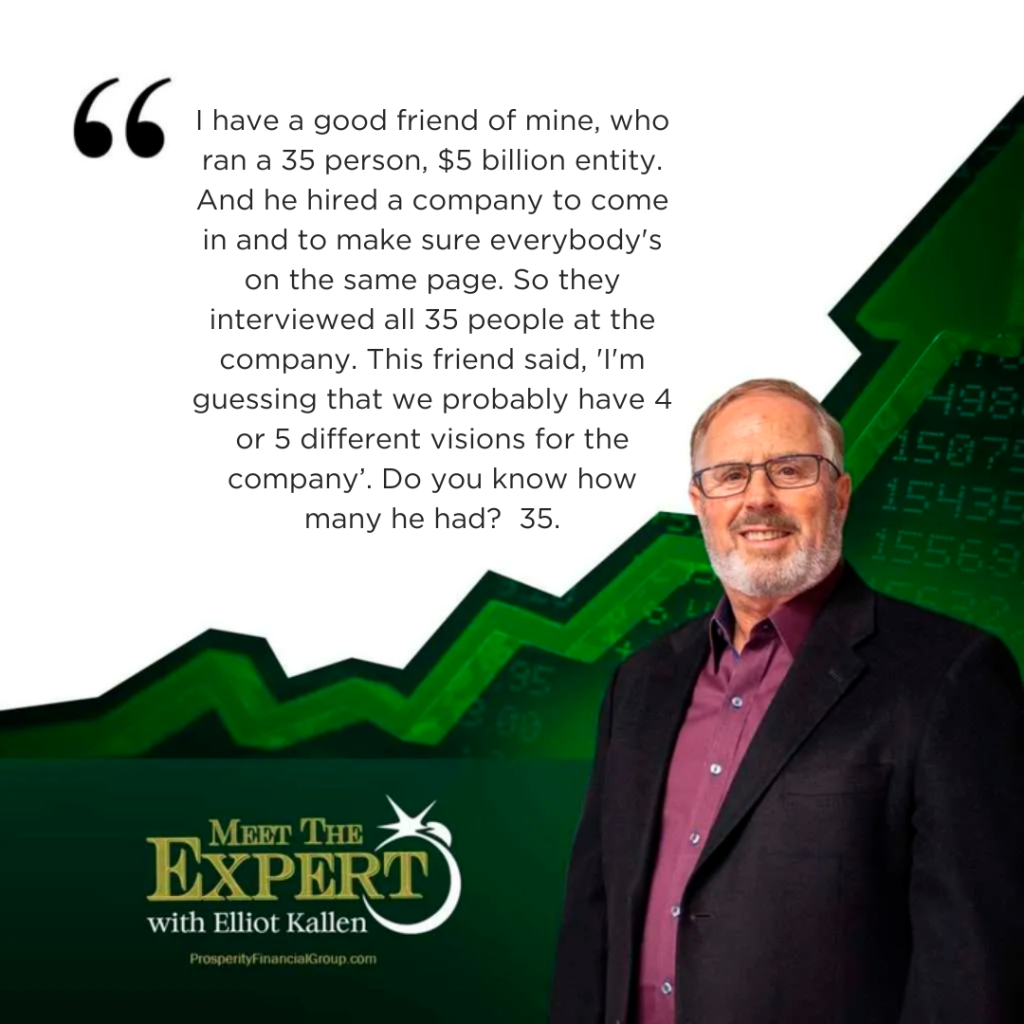
Mark O’Donnell: Yeah, absolutely. So, just as you said, EOS stands for the Entrepreneurial Operating System, and it’s a complete system with real-world, simple, practical tools that help companies, entrepreneurs, and leaders do three things that we call vision, traction, and healthy.
- Vision: Getting you and your leadership team 100% on the same page with your vision, where you’re going, and how to get there.
- Traction: Creating discipline and accountability to execute every aspect of that vision.
- Healthy: Creating healthy, cohesive, and functional teams.
Aligning Your Leadership Team
We start with the leadership team, the three to eight people usually at the helm of the organization. We get them on the same page with that vision, seeing the same thing and wanting the same thing. We’re helping them become masters of execution and healthy teams starting with that leadership team. If you’ve got 50 people, we work one layer at a time until all 50 out of 50 of your people are experiencing those same three things. So that’s what we do all day, every day.
Creating Discipline and Accountability
Just to give you some stats on who we’ve worked with: it’s all based on the book Traction by Gino Wickman. The traction library has sold over 3 million copies to date. Over 270,000 companies have used our tools. We have EOS Worldwide Implementers who are the teachers, facilitators, and coaches that work directly with companies. We’ve worked with about 26-27,000 companies to date in about 37 countries, and there’s about 800 implementers around the world. So, that’s what we do. We say it’s a system for managing human energy because the tools are really about alignment and getting every human inside of your business rowing in the same direction, executing really well, and having a good time doing it. So that’s what we do.
Implementing EOS in Your Business
Elliot Kallen: Great. And folks, if you’re wondering why we’re interviewing Marc, it’s because we deal with a lot of business owners and C-suite people. We all talk to them about exit strategy, vision, and how the company is doing. Are you on track? How’s the company performing? Are you taking Money? These are common questions that come up. We’re used to those questions as financial people. We want to help companies grow because we want to be part of their Growth and part of their exit strategy at the same time because that’s something we capitalize on.
For Mark and what he’s doing, he’s trying to get everybody on the same page. I have a very good friend of mine, the CEO of a 35-person, $5 billion entity, who hired a company like Marc’s to make sure everybody’s on the same page. They interviewed all 35 people in the company, and this friend of mine, the CEO, guessed that they probably had four or five different visions for the company, and four or five different goals for the company. And so with 35 employees, you know how many? 35.
Mark O’Donnell: That’s not surprising.
Elliot Kallen: And I’m guessing we’re not that size. We’re not quite that big. Almost a half a billion dollars with our one firm and almost the same amount with our second firm. We’re not quite that big, but I imagine that everybody here has a different vision because it’s all self-serving.
Challenges of Scaling and Managing People

Mark O’Donnell: Sure, absolutely. The way we do that is, well, number one is to kind of boil this down. Just to give you a little historical context, there are lots of business tools out in the world. Not jsut EOS Worldwide. There are thousands of books you can read, and our founder, Gino Wickman, took all those books, and thousands of tools, and he had some criteria: he was going to create some tools and reuse some tools that have been in existence. So anything I’m going to say has been around for 100 years; it’s going to be around for 100 more. In other words, they are based on first principles. And so he took those tools, and tested them in front of clients, and it was about what could produce the largest amount of results in the least amount of time. So the 80-20 rule. All the tools that I’m going to share are very, very simple. They’re stripped down, and they’re just designed to produce the largest amount of results in the least amount of time, effort, and energy. So just for some context there.
We strengthen what we call the six key components of the business:
- Vision: Tools to get everyone aligned with the vision.
- People: Ensuring you have great people to execute the vision.
- Data: Measurements and getting all the data to make great decisions.
- Issues: Solving issues at the root so they go away forever.
- Process: Developing your Franchise prototype to consistently produce results.
- Traction: Propelling the organization forward because vision without traction is just hallucination.
Identifying Core Values
To implement these tools, you can visit our website, eosworldwide.com, or get a copy of Traction. The vision component involves answering eight questions: core values, core focus, target, marketing strategy, three-year picture, one-year plan, quarterly rocks (90-day goals), and long-term issues list. The leadership team must be on the same page with these answers and communicate them to everyone in the organization.
People are those who share your core values and fit your culture. Data involves scorecards and measurables for every level of the business. Issues are identified and solved at the root. Process documentation ensures consistency. Traction involves specific agendas, weekly meetings, and everyone has a 90-day goal.
Addressing Diverse Visions and Goals
Building an Intentional Culture with EOS Worldwide
Elliot Kallen: Okay, so I noticed that that’s just great stuff, and I was taking notes too. I noticed that when we’re talking about this, we have to bring the most important part back to this and the greatest challenge that we all have as business owners, and that’s people. So we can give them goals, and we can give them vision, but we can’t change their personality. We can’t change their home life. The kitchen has a lot of things. But we may have to change people. If part of what we do is scale up because we want to double or triple the company in five or ten years, we’re going to go through a lot of people. How does this play in as the real challenge?
Mark O’Donnell: Yeah, absolutely. It is, and my co-authors and I just wrote and released our newest book, People: Dare to Build an Intentional Culture. We’re taking that people component of the six key components and diving deeper into it. The subtitle is “Dare to Build an Intentional Culture.” Jim Collins made famous the idea of getting all the right people on the bus and then deciding where the bus was going. But what most people conveniently shy away from is the first step: getting all the wrong people off the bus, getting all the right people on the bus, and then going where you want to go. So when we think about that and how to scale a culture, it starts with those core values. You have to hire, fire, review, reward, and recognize all your people around those core values. You’re probably not going to change personalities or convince people to share core values they don’t. They really just don’t belong in your business and would be much happier working for someone else who does share their core values.
Defining Your Culture Types
In researching thousands of companies, we identified four culture types that emerge through the entrepreneurial journey:
- Happy Accident: Healthy but lacks intentionality. It’s a mix of friends, family, and acquaintances without a strong foundation.
- Chaotic Culture: Neither healthy nor intentional. Marked by politics, gossip, and unpredictable performance.
- Command and Control: Intentional but unhealthy. People are seen as replaceable parts, leading to high turnover.
- Intentional Culture: Healthy and intentional. High trust, open and honest communication. People who don’t fit self-select out. All processes are aligned to bring in people who share core values and excel in their roles.
Building an intentional culture takes courage, as it often involves letting go of people you initially hired. It’s a continuous, never-ending process.
Overcoming Growth Challenges and Hitting the Ceiling
Elliot Kallen: Well, you can listen to “Meet the Expert with Elliot Kallen.” We’re going to take a few moments off here, but you’re listening to Mark O’Donnell on how to drive your company to new heights, get the people to pull all in the same direction, and manage human energy. We’ll see you in a moment.
It’s funny to talk about that intentional culture. I’ve got a book behind me that I wrote, which is not at 100,000 copies or 300,000 copies, but it is an Amazon bestseller about leadership and leadership within the corporate world. And you’re right, it is by intention. You can’t be an accidental leader. You just aren’t the leader. Julius Caesar didn’t happen by accident, so to speak.
Creating a Healthy and Intentional Culture with EOS Worldwide
But I do know that for someone who’s now started five companies as an entrepreneur and sold two of them, when you’re scaling up and growing, no matter how intentional you want to be, you’re always in a world of chaos. Because you’re in growth mode. And it can affect a lot of people. Prosperity Financial Group is growing double digits in net assets every year, year over year, which is pretty amazing in an industry that’s barely growing.

But this puts a huge strain on your people. If your people are your assets, the most important assets you have—not your baking machinery, pie-making mixes, or even ingredients, but your people—then you put a strain on them. They take their work home because they’re so growth-oriented and try to fit 24 hours of work into every eight hours. You are probably the hardest person to duplicate and the most driven person in the company as CEO. And you’re driving your people nuts. So let’s speak about that. You want to be intentional in your culture, but you’re bordering on chaos. How do you manage that?
Mark O’Donnell: We see that all the time, especially in growing companies. We call it hitting the ceiling. I’ll describe it using two models. The first is hitting the ceiling. It’s inevitable; it happens over and over. It’s an evolution and revolution of business. You break through the ceiling, everything is great, you start growing, and then you hit the ceiling again. Everything falls apart.
The Five Leadership Abilities
To break through that ceiling each time, you need to master five leadership abilities:
- Simplify: Break everything down to its root. Eliminate complexity.
- Delegate: Delegate tasks based on unique abilities and strengths.
- Predict: Solve issues long-term and short-term. This includes opportunities and ideas.
- Systemize: Create repeatable systems and processes.
- Structure: Organize your people through an accountability chart.
Hitting the ceiling is inevitable. Mastering these five abilities will help you break through each time.
Now, zooming in on the individual inside a company, we write about the GWC flow channel in our book. GWC stands for Get It, Want It, and Capacity. It’s about ensuring employees have the skills, motivation, and capacity to do their jobs well. When companies grow, they often give work to people who are available, which can throw them out of their challenge-skills balance. If the challenge is too high, they experience Stress and Anxiety. If the challenge is too low, they get bored. Both situations lead to erratic behavior and decreased performance. Being intentional about delegating and ensuring performance and avoiding Burnout.
The Role of Personal Coaching in Business Success

Elliot Kallen: So we’re talking with Marc O’Donnell, the CEO of EOS Worldwide, which stands for Entrepreneurial Operating System. It’s about people, vision, and managing human energy in companies. I still have a few more questions before we end this, Marc. But if someone wants to reach me, they can contact me at Elliot@prosperityfinancialgroup.com or 925-314-8503, or look us up at ProsperityFinancialGroup.com. All these “Meet the Expert” episodes are available there, and we’re in the top 1 to 2% of all financial podcasts globally. So lots of people, Mark, are going to be listening to this and will appreciate what you’re saying.
I’ve been a big fan of personal Coaching. I’ve been a fan of Tony Robbins, walking on fire, and motivational speakers like Wayne Dyer. As a highly motivated CEO, I’ve found value in personal coaching. How do you see personal coaching fitting into what EOS Worldwide offers, especially for companies that may not be large enough to fully engage your services?
Mark O’Donnell: There are really three ways to implement the tools of EOS. You can create your own operating system, but that takes a long time.
Steps to Implementation
Why reinvent the wheel when it’s already been created?
- Self-Implementation: You can do this for free. Get the book Traction, which provides a step-by-step guide. For $20, you can implement all the EOS tools on your own.
- Basecamp: This is a program that teaches an individual or leadership team in the C-suite to facilitate these sessions, get the vision documented, core values identified, and start the process of alignment. It’s a low-cost option to do it yourself.
- Hire an EOS Implementer: These are coaches who act as teachers, facilitators, and coaches. They teach you the tools of EOS, create the context and container, facilitate the answers into those tools, and coach you. They help you play the entrepreneurial game a little better. For me personally, becoming an implementer and implementing these tools on my own was like “Doctor, heal thyself.” I realized I wanted my team to buy into the vision we were creating, not just rely on me to tell them what to do. An outside coach provides objectivity and calls out everyone on their issues, leading to faster and healthier results.
The average company running on EOS grows 37% per year, which shows that aligning human energy works. Hiring a coach helps you get more of what you want from your business.
Conclusion
Elliot Kallen: This has been great, Marc. For those in the C-suite looking to align their teams and scale their businesses without burning out their people, Marc and EOS Worldwide offer invaluable tools and expertise. If you’re a business owner with 10 to 250 employees, EOS is definitely something to consider.
Mark O’Donnell: Thank you, Elliot. For more information, you can reach me at modonnell@eosworldwide.com or connect with me on LinkedIn.
Recap
Elliot Kallen: To recap, Marc shared insights on how to drive your company to new heights by getting everyone to pull in the same direction and manage human energy. He talked about the importance of vision, people, and culture, supported by data and processes to create traction. Core values are crucial, and Marc emphasized that most companies don’t have their core values in writing, which is a fundamental step.
He also highlighted the challenges of scaling and managing people, noting that hitting the ceiling is inevitable but can be overcome by mastering five leadership abilities: simplifying, delegating, predicting, systemizing, and structuring. These abilities help break through the ceiling each time.
Personal coaching plays a significant role in business success. EOS Implementers act as teachers, facilitators, and coaches, helping companies align their teams and achieve their vision more effectively. Whether you’re a small or large company, there are different ways to implement EOS tools, from self-implementation to hiring a coach.
For business owners, especially those in the C-suite, Mark’s advice on managing human energy and creating an intentional culture is invaluable. It’s about getting everyone on the same page and moving in the same direction. If you need to reach out to Marc or learn more about EOS, visit eosworldwide.com or connect with him on LinkedIn.
Thank you for tuning in to “Meet the Expert.” For more episodes and insights, visit ProsperityFinancialGroup.com. We’ll see you next time.
The post Mastering the 6 Key Components of Business Success appeared first on Prosperity Financial Group | San Ramon, CA.








